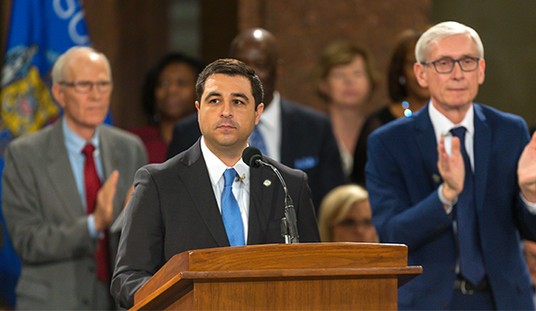If Hillary Clinton becomes our next president, you can expect an invasion of industrial wind development in your community that has the potential to severely damage your property values, ruin the viewshed, and impact your sleep patterns.
While not one of her top talking points, a President Hillary will increase the amount of taxpayer dollars available to industrial wind developers. At a July 2015 campaign stop in Iowa, she supported tax incentives and
So, if your area hasn’t been faced with the construction of wind turbines, you can expect that it will be. The good news is the more wind turbines spring up, the more opposition they receive—and, therefore, the more tools there are available to help break the next wind project.
Rather than trying to figure out what to do on your own, John Droz, Jr., a North Carolina-based physicist and citizen advocate, who has worked with about 100 communities, encourages citizens who want to protect their community from the threat of a proposed wind project to maximize the resources that are available to them.
Recommended
Kevon Martis, who, as the volunteer director of the Interstate Informed Citizens Coalition, has helped protect citizens in 7 states, told me: “Nothing makes it harder for a wind developer in one community than if the neighboring community already has an operating wind plant. Once they can see the actual impacts of turning entire townships into 50 story tall power plants, they can no longer be led down the primrose path by wind companies and their agents.”
Martis’ equitable wind zoning advocacy has been extremely effective. In his home state of Michigan, wind has been on the ballot at the Township level 11 times since 2009 and has never won.
Two communities in Vermont have industrial wind on the ballot on November 8 and it is playing a big role in the state’s gubernatorial race where many Democrats are pledging to vote for the Republican candidate, who opposes more wind energy development. There, the foreign developer is essentially offering a bribe to the voters to approve the project.
Droz agrees that zoning is important—as are regulations. He believes that since an industrial wind project is something you may have to live with for more than 20 years, it seems wise to carefully, objectively, and thoughtfully investigate the matter ahead of time. Droz says: “In most circumstances, your first line of defense is a well-written, protective set of wind-energy regulations that focus on protecting the health, safety, and welfare of the community. They can be a stand-alone law, or part of a more comprehensive zoning document.”
Mary Kay Barton, a citizen activist from New York State, began writing about the industrial wind issue more than a dozen years ago when her home area in Western New York State was targeted by industrial wind developers. Wyoming County was slated to have more than 2,000 industrial wind turbines strewn throughout its 16 Townships. So far, the massive projects have been limited by the outrage of residents to the current 308 turbines in 5 rural districts. Barton told me: “We wouldn’t even be talking about industrial wind if cronyism at the top wasn’t enabling the consumer fraud of industrial wind to exist with countless subsidies, incentives and renewable mandates.”
Through his free citizen advocacy service, Alliance for Wise Energy Decisions, Droz tries to make it easier for communities to succeed when dealing with industrial wind energy by learning lessons from some of the other 250 communities that have had to deal with it.
At WiseEnergy.org, Droz has a wealth of information available including a model wind energy law that is derived from existing effective ordinances plus inputs from numerous independent experts. He advocates a wind energy law that contains carefully crafted conditions about these five elements:
- Property value guarantees;
- Turbine setbacks;
- Noise standards;
- Environmental assessment and protections; and
- Decommissioning.
Droz, Martis, and Barton are just three of the many citizen advocates that have had to become experts on the adverse impacts of wind energy. Because of their experiences, many are willing to help those who are just now being faced with the threat.
Because I’ve frequently written on wind energy and the favorable tax and regulatory treatment it receives, I often have people reaching out to me for help—but I am not the expert, just the messenger. These folks are dealing with it day in and day out.
If the threat of industrial wind energy development isn’t a problem for you now, save this information, as it likely would be under a Hillary Clinton presidency.
“There was a time when the environmental movement opposed noise pollution, fought industrial blight, and supported ‘little guys’ whose quality of life was threatened by ‘corporate greed,’” writes Martis. “But that was a long time ago, before wind energy.”
























Join the conversation as a VIP Member